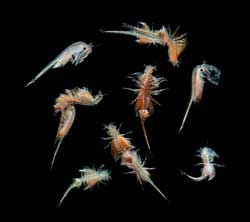| Sep 01, 2016 |
Predicting the future with evolution
|
|
(Nanowerk News) The aim of the QUANTEVOL (Quantitative evolution) project was to determine whether evolutionary theory can be used to make decisions about the future and what the time horizon of these predictions would be. Although the discipline of evolutionary theory has existed for some time several key issues limit its use in making predictions.
|
 |
|
The first obstacle is the lack of quantitative theory for predicting the effect of new mutations under different conditions. The second is that the diversity of mutational effects is not usually included in adaptation models. Thirdly, scientists rarely attempt this kind of prediction for patterns of long-term adaptation in the laboratory and in nature.
|
|
Researchers addressed these challenges by using a general stand-alone approach based on n-dimensional fitness landscape model to predict the distribution of mutational effects. Scientists employed statistics to predict the effects of single mutants and the interaction of mutants at the same or different loci.
|
|
This approach was also used to predict the effect of mutations across environments and to define the conditions under which the genetic basis of adaptations can be predicted. It was then applied to the available data and found to be sufficiently accurate to model weak to moderate mutational effects. New experiments were also set up to test the theory and better understand the variation of mutational effects across environments.
|
|
New methods for measuring fitness were also developed based on fluorescent algae and state-of-the-art statistical analysis that dramatically improved upon standard methods. A new method for measuring fitness from life history trait data was also developed.
|
|
Adaptation to abrupt environmental change was investigated by conducting laboratory studies concerning the long-term adaptation of Escherichia coli bacteria to acid conditions. The experiments revealed that niche evolution can be accurately described using global deformation models, but conventional scenarios need to be revised to account for plasticity evolution.
|
|
Brine shrimps (Artemia) transplanted to tropical salterns were used as a model to study adaptation to increased temperature in the field. Results showed that even over hundreds of generations little adaptation occurred in the field compared to the laboratory.
|
|
This was probably due to the numerous trade-offs populations face under natural conditions compared to populations raised in the laboratory. This was particularly true with regard to the impact of biotic interactions on populations, even in the biodiversity-poor hypersaline environment favoured by Artemia.
|
|
QUANTEVOL therefore led to a series of results that together will make a significant contribution to predictive science.
|

